Cauliflower Tabouleh Salad
One taste of my cauliflower tabbouleh and you’ll be hooked. Also spelled cauliflower tabouli, this easy-to-make recipe is intensely flavorful and refreshing. It has all the vibrancy of traditional tabbouleh while also being grain and gluten-free.
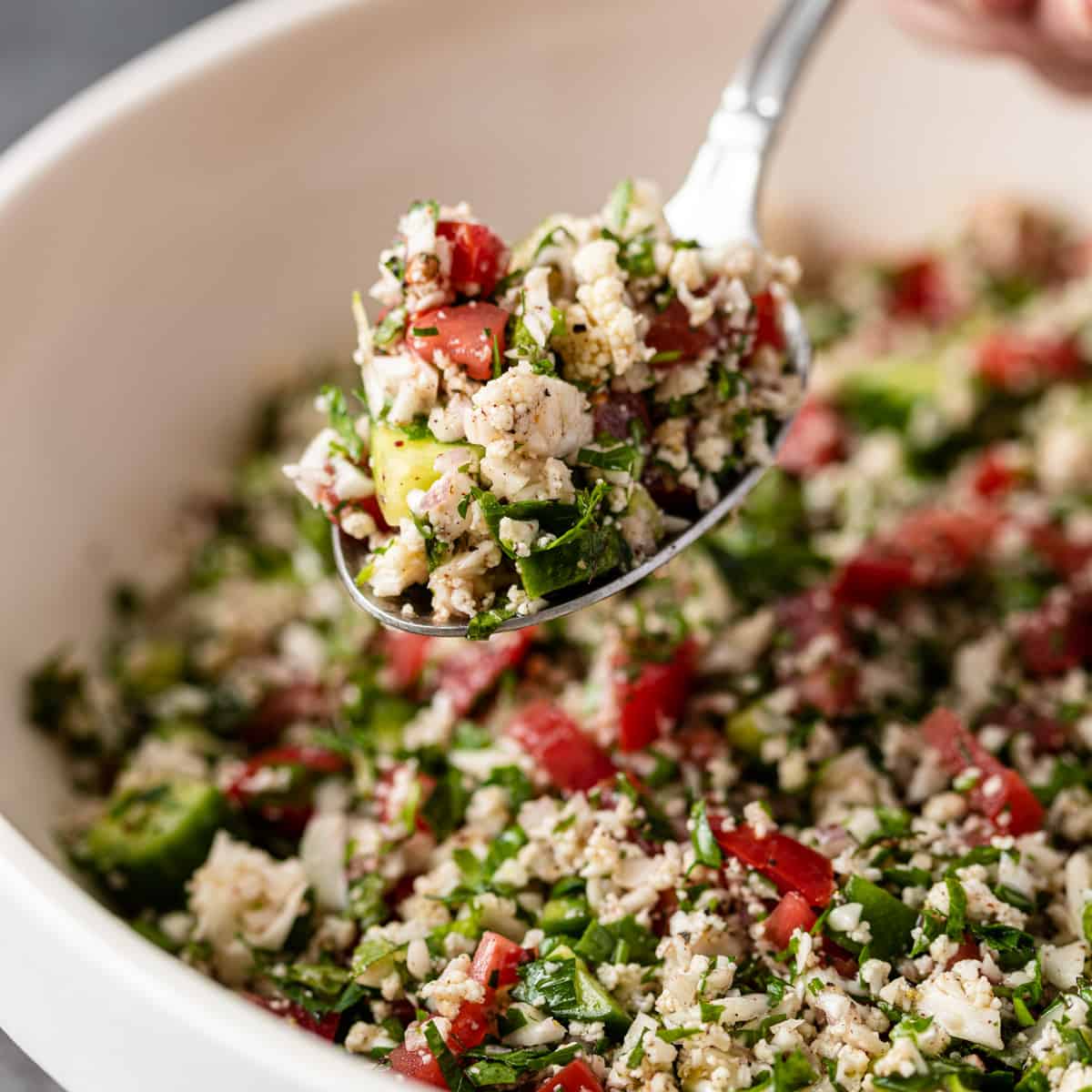
The weather is heating up and Refreshing Salads are back on rotation. Today’s recipe is a grain-free twist on traditional tabbouleh salad that is enjoyed alongside countless dishes in both Middle Eastern and Mediterranean Cuisine. It has quickly become my new favorite side dish.
Table of Contents
Just like the original, my cauliflower tabbouleh is chock full of fresh herbs and vegetables that are finely chopped and drenched in a vibrant, lemon-herb dressing. The only change is that riced cauliflower takes the place of grains.

This exceptionally scrumptious salad is perfect whether your guests are gluten-free, vegan, Paleo, Whole30, or even keto.
I recommend serving cauliflower tabouli with a plate of Kawarma (Hummus with Lamb) and some fresh Pita Bread (Khubz) for a truly stellar snack.

- Cauliflower – Crunchy, nutty, and slightly sweet, this versatile veggie takes the place of grains.
- Tomato – Choose Roma tomatoes or plum tomatoes for their superior texture. You can also omit the tomatoes and instead use pomegranate arils, which have a tart-sweet flavor.
- Cucumber – I prefer Persian cucumbers for their thin skin, small seeds, and low moisture content. You can also sub in English or another thin-skinned variety.
- Shallots – Adds a sweet, delicate onion flavor with just a bit of sharpness. If necessary, yellow onions can be used instead.
- Parsley – Brings a clean, peppery, and earthy flavor. Be sure to use flat-leaf parsley as curly is too bland.
- Mint Leaves – This cooling, subtly sweet herb adds refreshing flavor while balancing the other flavors of the salad.
- Dressing – This dynamite dressing is a combination of lemon juice and olive oil with spices like zesty garlic, bright sumac, and warming allspice.

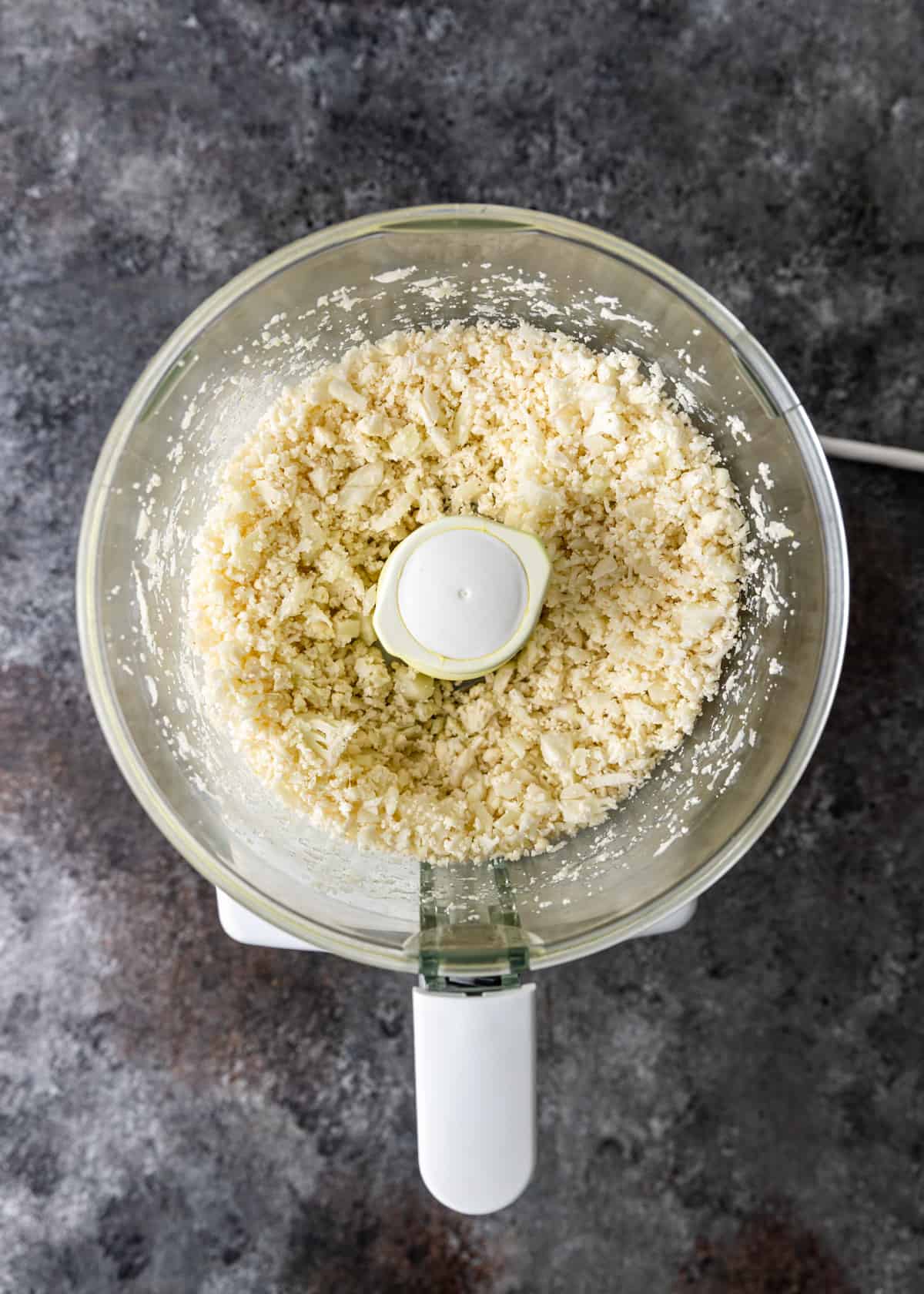
- Prepare the Cauliflower. Cut the entire head of cauliflower into large pieces, discarding the leaves. Divide the chopped cauliflower into small batches. Pulse each batch with a food processor until it is the texture of rice. Take care not to over-process it or you will end up with mush. You can also use a box cheese grater with medium holes to achieve the same result. Transfer the riced cauliflower to a large salad bowl.
- Chop the Veggies. Finely dice the cucumbers, tomatoes, and shallots with a sharp knife and toss them in the bowl along with any juices.
- Process the Parsley. Take one bunch of parsley at a time and chop off half of the stems to discard. Finely chop the remaining stems and leaves, repeating the process a second time to get the parsley as finely chopped as possible. Put it in the bowl with the other ingredients, then repeat with the other parsley bunches.
- Add the Mint. Gently pluck the leaves from the mint and discard the stems. Stack several leaves and slice until they are as fine as the parsley leaves. Add to the salad bowl and continue with the rest of the mint.

- Make the Dressing. Whisk the olive oil, lemon juice, garlic, allspice, salt, pepper, and sumac together in a small bowl. Pour the dressing over the chopped vegetables.
- Mix & Marinate. Lightly toss to combine all ingredients. Do a taste test and adjust any seasonings as you see fit. Cover the bowl tightly with plastic wrap, then pop it in the refrigerator for at least 30 minutes to marinate.
- Stir & Serve. Remove from the refrigerator and stir well before serving. You can enjoy cauliflower tabbouleh cold or at room temperature.
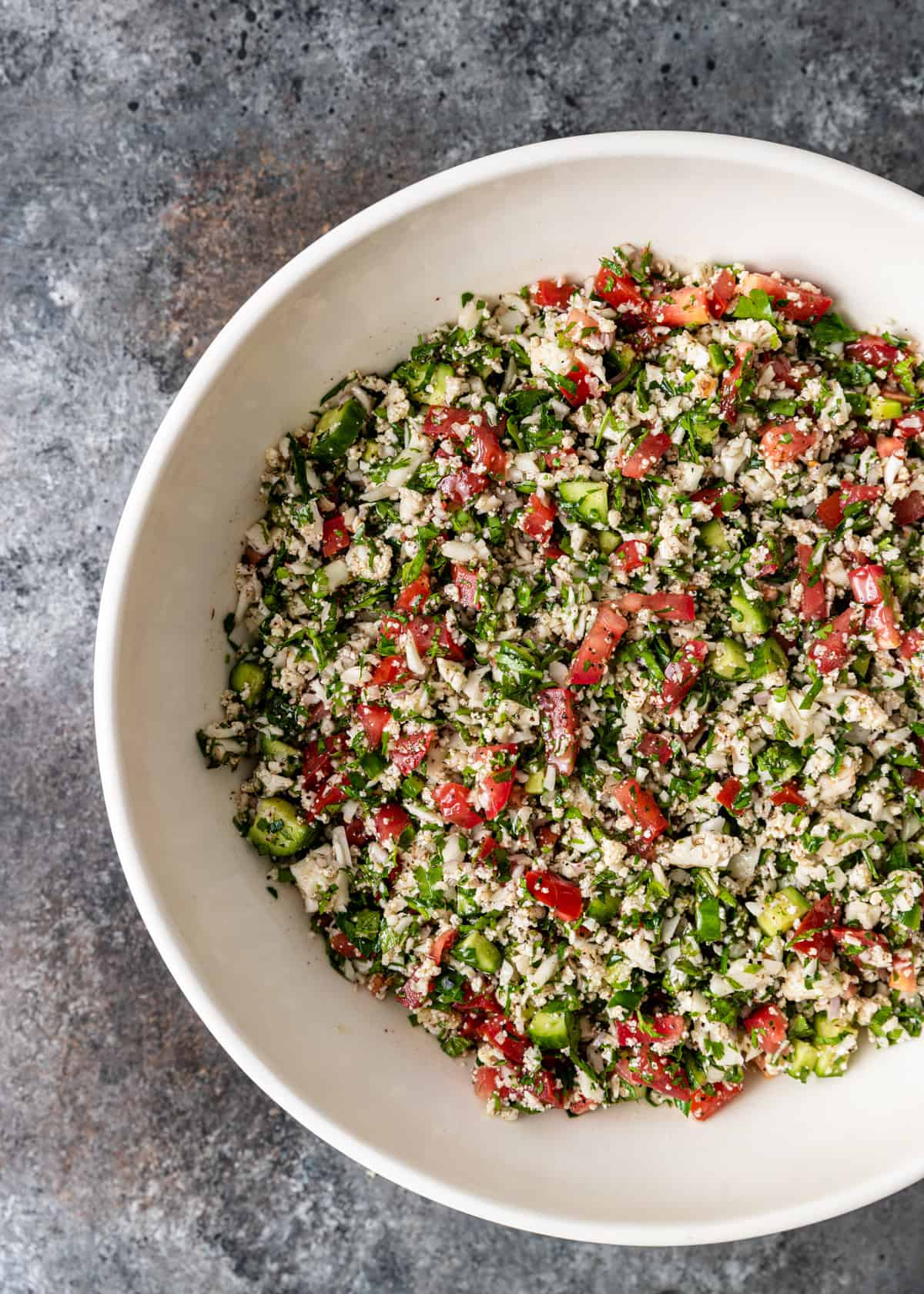
Traditionally, tabbouleh is made with bulgur wheat, but there are a few acceptable substitutions. The most common substitution in the United States is couscous, which is made from a different variety of wheat.
If you are looking for a gluten-free substitute, you’re in luck! You can make mouthwatering tabbouleh by replacing the bulgur wheat with quinoa or with riced cauliflower, like in this cauliflower tabbouleh recipe.
Don’t overdo it. Too many spins in the food processor will turn it all to mush.
Chop herbs by hand. Using a food processor or dull chopping tool may seem convenient but can often lead to bruised or over-processed herbs — making your salad soggy. Use an herb snipper or very sharp knife when cutting your parsley and mint for the best results.
Adjust the amount of juice. I like to include vegetable juices in cauliflower tabouli, but you can omit them for a dryer salad if desired. You can also chop the veggies 10 or so minutes in advance, place them in a colander, and sprinkle with salt to extract extra moisture.
Kept in an airtight container, cauliflower tabouli will stay good for up to 4 days in the refrigerator.
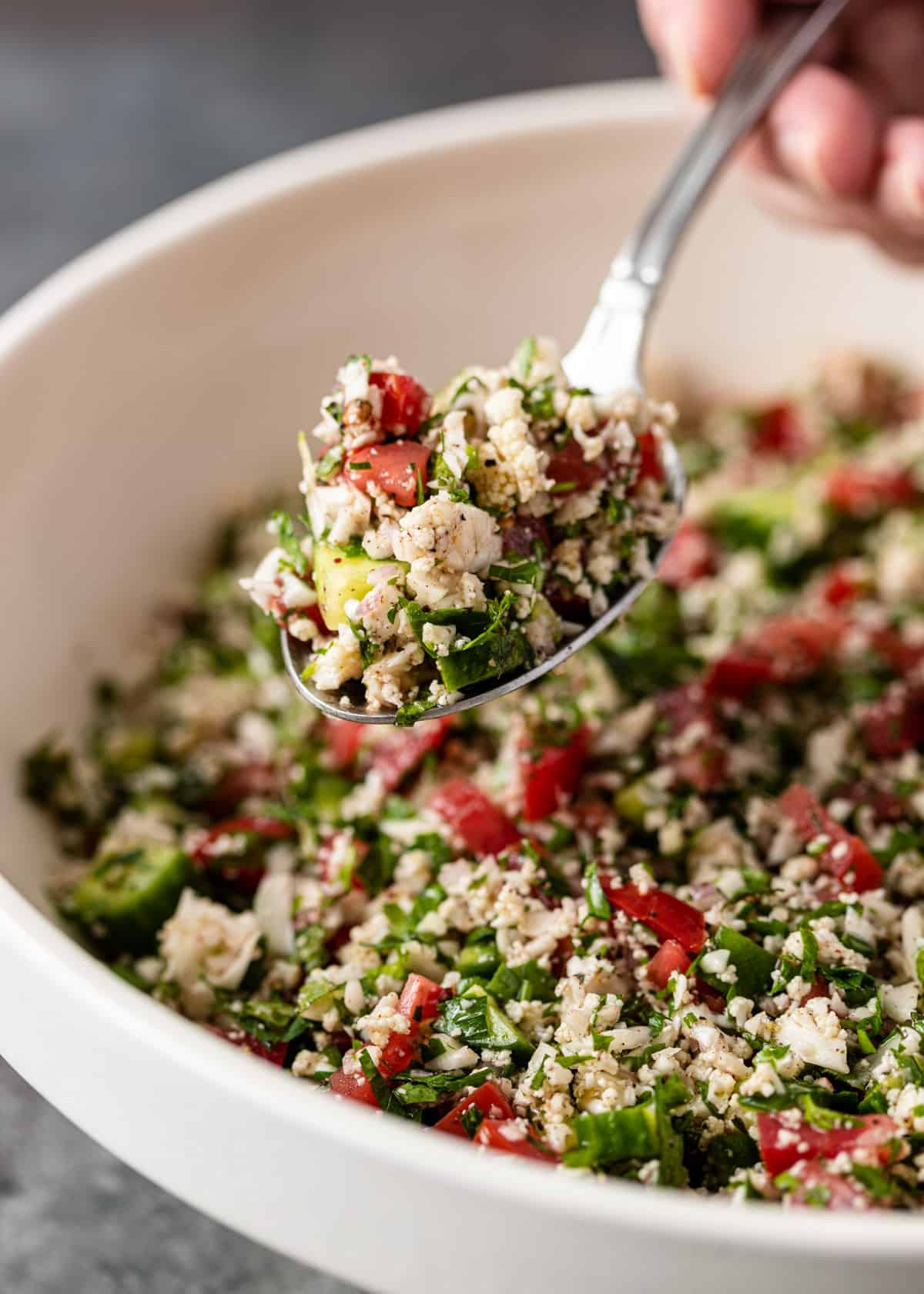
Share this recipe on Pinterest!
Love this recipe? Share it with the world on Pinterest.

Cauliflower Tabouleh Salad
Ingredients
- 1 medium head cauliflower
- 1 lb tomatoes (See Note 1)
- 3 persian cucumbers or any thin skinned
- 1 shallot
- 2 bunches Italian (flat leaf) parsley (See Note 2)
- 1 bunch mint leaves
- 1/2 cup olive oil
- 4 tbsp lemon juice
- 1 clove garlic minced
- 1 tsp ground allspice
- 1 tsp kosher salt
- 1 tsp black pepper (See Note 3)
- 1/2 tsp sumac optional
Instructions
- Discard the leaves and chop the entire cauliflower into large pieces. Working in batches, place the cauliflower into a food processor and pulse until it has the texture of rice or use a box cheese grater (medium holes). Don’t over process or it will get mushy. Transfer to a large salad bowl.
- Using a sharp knife, finely dice tomatoes, cucumbers and shallot. Add to the bowl along with their juices.
- Using 1 bunch of parsley at a time, chop off half of the stems and discard them. Finely cut the parsley leaves and stems (See Note 4). Go over them once again to cut as finely as possible. Add to the bowl and repeat with remaining parsley.
- Separate the mint leaves from their stems and discard stems. Stack the mint leaves, several at a time, and cut them as finely as the parsley. Add to the bowl and repeat with remaining mint leaves.
- In a small bowl whisk together the lemon juice, olive oil, garlic, allspice, salt, black pepper and sumac.
- Pour the dressing over the chopped vegetables. Use large spoons to lightly toss and combine all ingredients. Taste for flavor, add seasoning if needed, then cover bowl with plastic wrap and chill in refrigerator for 30 minutes for flavors to meld.
- Stir before plating. Serve traditionally, at room temperature, or chilled if you prefer alongside chips or pita.
Notes
- Use any tomato if you prefer. I prefer Roma (also known as plum tomatoes) as they are firmer and easier to dice into very small pieces. Or, substitute pomegranate arils, which have a tart-sweet flavor.
- Substitute curly parsley if you can’t find the Italian flat leaf variety. Just be sure it is a 3 to 1 ratio of parsley to mint.
- I oftentimes substitute red pepper flakes for the black pepper.
- I highly recommend using an herb snipper or sharp knife to cut the parsley and mint. Although easier to use, food processors and unsharpened manual food choppers tend to bruise the herbs, causing them to become wet and soggy.
Nutrition
The information shown is an estimate provided by an online nutrition calculator. It should not be considered a substitute for a professional nutritionist’s advice.


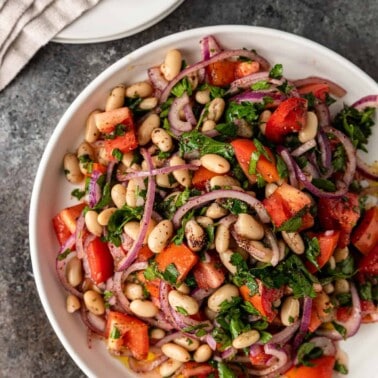
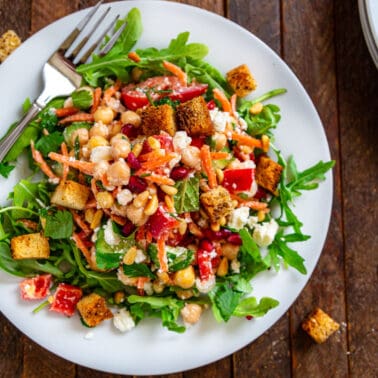
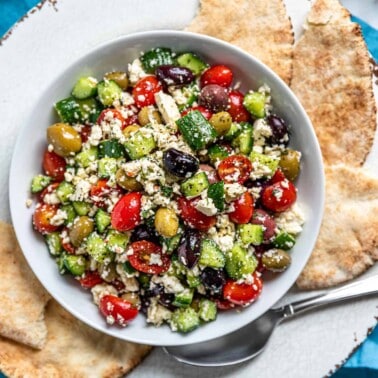
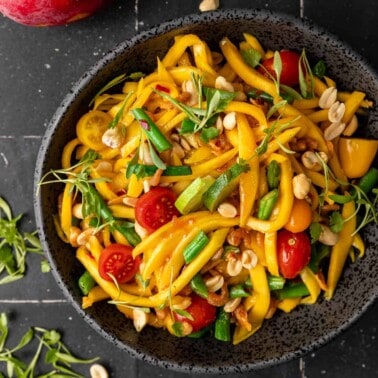








This is a fun twist to the original, and with my cauliflower from the garden, it was put to good use!
Fantastic Mary, thanks for coming back to let me know. 🙂
Tabouli is a parsley based salad and should have way more parsley than any grain/sub used. Otherwise, it’s a bulgur salad (that actually common in Turkey).
I lov your page and have tried few recipes that were delicious.
Indeed Inshrah. I have a great traditional tabouli here on the site as well as other versions using cauliflower, like here, or my lentil tabbouli coming soon. Thanks for following along! 🙂